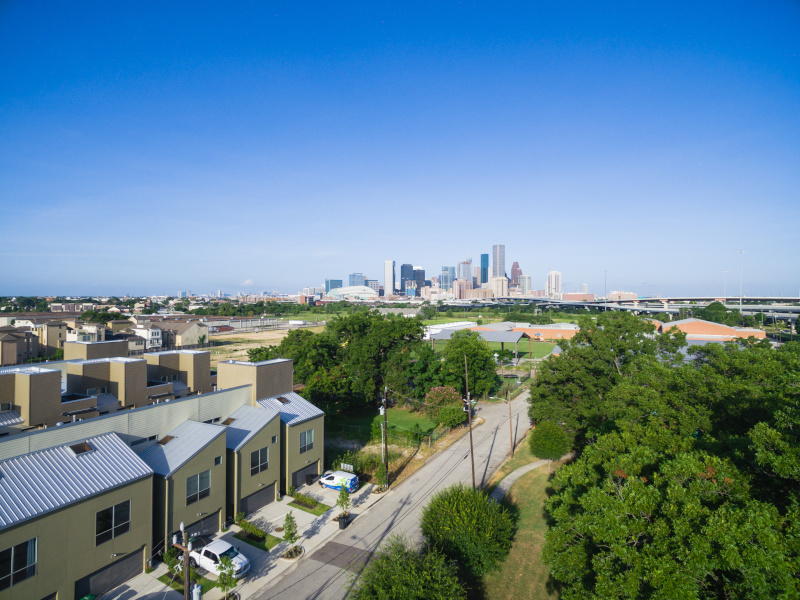You are viewing our site as an Agent, Switch Your View:
Agent | Broker Reset Filters to Default Back to ListReal Estate Market Analysis: 10 Ways to Identify Emerging Neighborhoods
September 26 2023
 Are you ready to embark on a real estate adventure?
Are you ready to embark on a real estate adventure?
One of the keys to a successful real estate journey is the ability to spot emerging neighborhoods. These hidden gems are like buried treasures waiting to be unearthed, offering promising opportunities for future growth and investment.
In this article, we'll guide you through the exciting world of real estate market analysis and how to identify emerging neighborhoods that are ripe for investment.
The Art of Real Estate Market Analysis
Before we dive into identifying emerging neighborhoods, let's set the stage with some basics. Real estate market analysis is like Sherlock Holmes investigating a case — it requires attention to detail, keen observation, and a knack for connecting the dots. Here's how to get started:
a. Research, Research, Research: Begin your journey by gathering information about the city or area your clients are interested in. Explore data on population growth, employment rates, and local amenities. Websites like Zillow, Realtor.com, local government websites, RPR, and your MLS's public records tools are goldmines of data.
b. Talk to the Locals: Don't underestimate the power of a friendly chat with local residents. They can provide insights you won't find in any report. Ask about safety, schools, public transportation, and community events.
c. Keep an Eye on Development: New construction and infrastructure improvements often signal an emerging neighborhood. Check for planned developments like parks, shopping centers, or public transportation expansions.
d. Historical Data Matters: Examine historical property values and trends. A neighborhood that has shown consistent growth is a good sign.
Now that you've got your detective toolkit ready, let's delve into identifying emerging neighborhoods that are primed for growth.
1. Urban Revitalization
Urban renewal is comparable to a phoenix emerging from the ashes. It is the process of reviving a dilapidated area and making it a lively, sought-after location. Trendy cafes, art galleries, and an increase in home improvements are all indications of urban revival. Although it might increase home values, it's important to act quickly since if the neighborhood improves further, prices might become unattainable for some buyers.
2. Proximity to Job Hubs
A neighborhood is more likely to see growth if it is located close to important employment centers like commercial areas, technology parks, or universities. These neighborhoods are hotspots for real estate investment since people like to reside close to their places of employment to cut down on commuting times. Keep an eye on announcements of new corporate offices or campuses opening nearby; this can be a game-changer.
3. Infrastructure Upgrades
Cities' investments in infrastructure, such as new roads, transit systems, or parks, can have a big impact on the neighborhoods around them. These improvements increase an area's accessibility and appeal, frequently causing a rise in property values.
4. Low Crime Rates and Good Schools
For families, safety and education are top objectives. Long-term residents are drawn to areas with low crime rates and effective public schools, which raises property values. When examining possible rising communities, be sure to look up crime rates and school rankings.
5. Art and Culture Scene
The presence of theaters, art galleries, and cultural activities may indicate the development of a community. These cultural attractions attract both locals and visitors, fostering a lively environment and raising property values. Watch out for regional arts programs and events.
6. Rising Rental Demand
Certain communities develop into burgeoning hotspots as a result of rising rental demand. Students and young professionals frequently look for low-cost rental homes in developing neighborhoods. This increase in demand could signal future price growth.
7. Historic Charm and Unique Architecture
Neighborhoods with distinctive architecture and a sense of history frequently have room for expansion. The charm and beauty of these locations appeal to a lot of people. Just be mindful of any historic preservation laws that might have an impact on property changes.
8. Commuter-Friendly Locations
Neighborhoods with quick access to major highways or public transportation become more desirable as urban congestion rises. For prospective owners or tenants, a shorter commute might be a major selling feature.
9. Keep an Eye on Neighborhood Associations
A thriving neighborhood can be identified by active and involved neighborhood associations. They often work to improve local amenities, promote safety, and enhance the overall quality of life in the area.
10. Watch for the Ripple Effect
Sometimes, the emergence of a trendy neighborhood can have a ripple effect, transforming adjacent areas as well. Don't limit your analysis to just one neighborhood; consider the potential impact of neighboring areas.
In conclusion, identifying emerging neighborhoods in the real estate market is a bit like forecasting the weather — it requires careful analysis of various factors and a dash of intuition. By conducting thorough research, consulting with experts, and keeping an eye out for the signs mentioned above, you'll be well-equipped to spot the next hot neighborhood.
So, put on your detective hat and get ready to uncover the hidden gems in the world of real estate. Happy hunting!
To view the original article, visit the Transactly blog.









